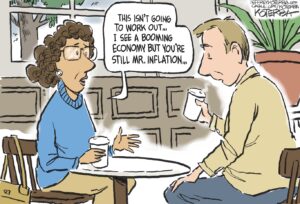Seattle Is Right
By raising its minimum wage to $15, Seattle is leading a long-overdue movement toward a living wage. A silhouette of the Seattle skyline. Shutterstock
A silhouette of the Seattle skyline. Shutterstock
This post originally ran on Robert Reich’s Web page.
By raising its minimum wage to $15, Seattle is leading a long-overdue movement toward a living wage. Most minimum wage workers aren’t teenagers these days. They’re major breadwinners who need a higher minimum wage in order to keep their families out of poverty.
Across America, the ranks of the working poor are growing. While low-paying industries such as retail and food preparation accounted for 22 percent of the jobs lost in the Great Recession, they’ve generated 44 percent of the jobs added since then, according to a recent report from the National Employment Law Project. Last February, the Congressional Budget Office estimated that raising the national minimum wage from $7.25 to $10.10 would lift 900,000 people out of poverty.
Seattle estimates almost a fourth of its workers now earn below $15 an hour. That translates into about $31,000 a year for a full-time worker. In a high-cost city like Seattle, that’s barely enough to support a family.
The gains from a higher minimum wage extend beyond those who receive it. More money in the pockets of low-wage workers means more sales, especially in the locales they live in – which in turn creates faster growth and more jobs. A major reason the current economic recovery is anemic is that so many Americans lack the purchasing power to get the economy moving again.
With a higher minimum wage, moreover, we’d all end up paying less for Medicaid, food stamps and other assistance the working poor now need in order to have a minimally decent standard of living.
Some worry about job losses accompanying a higher minimum wage. I wouldn’t advise any place to raise its minimum wage immediately from the current federal minimum of $7.25 an hour to $15. That would be too big a leap all at once. Employers – especially small ones – need time to adapt.
But this isn’t what Seattle is doing. It’s raising its minimum from $9.32 (Washington State’s current statewide minimum) to $15 incrementally over several years. Large employers (with over 500 workers) that don’t offer employer-sponsored health insurance have three years to comply; those that offer health insurance have four; smaller employers, up to seven. (That may be too long a phase-in.)
My guess is Seattle’s businesses will adapt without any net loss of employment. Seattle’s employers will also have more employees to choose from – as the $15 minimum attracts into the labor force some people who otherwise haven’t been interested. That means they’ll end up with workers who are highly reliable and likely to stay longer, resulting in real savings.
Research by Michael Reich (no relation) and Arindrajit Dube confirms these results. They examined employment in several hundred pairs of adjacent counties lying on opposite sides of state borders, each with different minimum wages, and found no statistically significant increase in unemployment in the higher-minimum counties, even after four years. (Other researchers who found contrary results failed to control for counties where unemployment was already growing before the minimum wage was increased.) They also found that employee turnover was lower where the minimum was higher.
Not every city or state can meet the bar Seattle has just set. But many can – and should.
Your support matters…Independent journalism is under threat and overshadowed by heavily funded mainstream media.
You can help level the playing field. Become a member.
Your tax-deductible contribution keeps us digging beneath the headlines to give you thought-provoking, investigative reporting and analysis that unearths what's really happening- without compromise.
Give today to support our courageous, independent journalists.









You need to be a supporter to comment.
There are currently no responses to this article.
Be the first to respond.